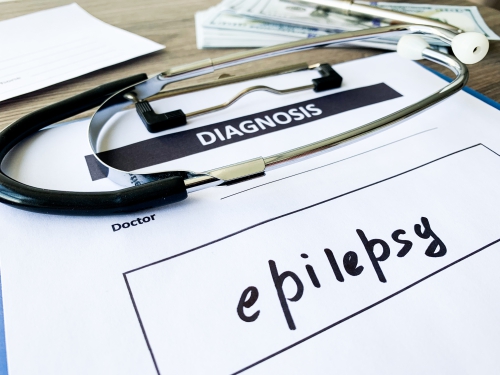What is Epilepsy?
A seizure is when there a sudden uncontrolled electrical firing in your brain which results in abnormal behaviour, uncontrollable body movements and changes in the level of consciousness. Epilepsy on the other hand is a brain disorder characterized with an increased likelihood and predisposition to have recurrent seizures. Seizures can be due to several factors such as genetics, trauma to the head, strokes, substance abuse and other metabolic disturbances. However, epilepsy is most commonly unprovoked.
In your brain, there are several synchronised electrical signals that move in an organised fashion to perform specific tasks. In epilepsy, there is a disturbance in these signals, and depending on the location where it occurs in the brain, variable symptoms will arise.
It is estimated that around 50 million people around the world have epilepsy, hence one of the most common neurological disease worldwide. Further studies have shown that around 70% of people can live without any seizure if the diagnosis is made properly and appropriate treatment is initiated. It is a chronic non-communicable disease.
Treatment of epilepsy is mostly medical in order to maintain a seizure-free state and in some cases the treatment may be discontinued depending on the person’s response. Surgery is a treatment of last resort if the person is not responding to medications.
Causes and risk factors
In most of the cases, the exact cause of epilepsy is unknown. However, in certain cases, some causes may be found.

The following can cause or increase your risk of having epilepsy and seizures:
- Brain malformations at birth: Malformations in the brain structure or damage to the brain during birth
- Infections: such as meningitis or viral infections of the brain or spinal cord
- Trauma to the head: following an accident, fall or other trauma
- Stroke: Due to the lack of proper blood circulation through certain areas of your brain following a stroke, the damaged brain tissue can trigger epilepsy.
- Brain tumours: brain tumours can impair proper flow of electrical signals in your brain hence triggering epilepsy.
- Inherited genes: if you have a family history of epilepsy, you are also at increased risk of having it as you may have certain genes associated with the disease.
- Illicit drug abuse: Drug abuse can alter normal brain’s functions and predispose you to epilepsy.
- Decreased blood sugar levels: With low amount of sugar in your blood, your brain cells are unable to perform their task properly, hence leading to abnormal electrical firing.
- Withdrawal from alcohol or drug abuse: this is due to imbalances in the essential hormones in your brain caused by the abrupt withdrawal from alcohol or other drugs.
The causes vary with age. For example, stroke is the most common cause among elderly people while head trauma and illicit drug abuse occur more frequently among younger people.

Signs and symptoms of Epilepsy
As mentioned earlier, the signs and symptoms of epilepsy depend on the type of epilepsy present and the site affected in the brain. Different types of seizure can present with a variety of signs and symptoms.
Types of seizures
There are several types of seizures identified and each present with different signs and symptoms, namely:
Focal seizures
Focal seizures occur when the abnormal electrical signals originate from a single area in the brain. This category can further be classified into:
- Focal seizures with preserved awareness: In this type of seizure, symptoms manifest as movement or sensory abnormalities, however the person is fully aware of the surroundings. These are also known as simple focal seizures.
- Focal seizures with impaired level of consciousness: These are also known as complex partial seizures. In these seizures, the person presents with movement or other abnormalities along with decreased or loss of consciousness.
Generalised seizures
This type of seizure occurs when abnormal electrical signals are present in the whole brain. This can be classified into the following subtypes:
- Absence seizures: This is a common type of seizure among children where they are found to stare into space with possible association with eye blinking or lip smacking. The consciousness is impaired during this period and it is usually brief.
- Tonic seizures: In this type, the muscles of your body become stiff and this may lead to falls.
- Atonic seizures: In this type of seizure, there is a complete loss in muscle control which causes the person to suddenly collapse and fall down.
- Clonic seizures: This is characterized by repeated jerking movements of your muscles.
- Myoclonic seizures: This presents as brief jerking movements or muscle twitches of your limbs.
- Tonic-clonic seizures: This type of seizure manifest as with loss of consciousness, stiffening of muscles and jerking movements. It can also be accompanied with urine leak or tongue biting.

Making a diagnosis
A proper and detailed history plays an essential role in making the diagnosis of epilepsy. The history will depend on whether you witnessed someone having the seizure or if you had the seizure yourself. It is very important to give the following details to your doctor:
- Was there any warning signs before the seizure?
- What did the person having the seizure do during the episode?
- Does the person having the seizure remember what happened during the episode?
- How did the person having the seizure feel after the episode?
- How long did the seizure last?
- How frequent does the person have seizures?
- Do you have any idea of what may have triggered the seizure?
- Is the person having the seizure on any anti-epileptic treatments?

Your doctor will then perform a physical examination depending on the history obtained.
Furthermore, other tests can be requested to aid in making the diagnosis:
- Blood tests: This is used to check for the presence of infections, metabolic derangements and to check for the presence of drugs. If you are already taking treatment for epilepsy, blood samples may be taken to check for the level of the medications in your blood in order to check whether the dose is appropriate or to check for your adherence to the treatment.
- Imaging studies: Imaging studies such as Magnetic resonance imaging (MRI) or computed tomography (CT) scan of the head can be used to evaluate for the presence of any abnormalities in your brain structure that may be triggering seizures.
- Electroencephalogram (EEG): This is a test that records the electrical activity of the brain through electrodes placed on the head. If abnormal patterns are recorded, this may indicate epilepsy.
The diagnosis of epilepsy is generally made after at least 2 unprovoked seizure episode.
Treatment of Epilepsy

Up to 70% of people can live a seizure-free life if on the proper medications. The best class of medication used for the treatment of epilepsy is anticonvulsant medication. Some examples include lamotrigine, valproic acid, topiramate, zonisamide, phenytoin, carbamazepine, and ethosuximide. It is better to be on only one medication for the treatment of epilepsy, but some of the cases require a combination of medications.
If you go at least two years without any seizure after starting anticonvulsants, your doctor may discontinue your medications in a particular way, which he/she will advise you. However, after discontinuation, there is still a risk of relapse. In choosing the best therapy for you, special considerations will be taken if you have any other medical conditions or if you are pregnant.
Other treatment strategies may include:
- Ketogenic diets: In this type of diet, your body depends on fat as its energy source. This has shown to have effects on epilepsy, especially in children with severe epilepsy.
- Vagal nerve stimulation: In this treatment modality, a stimulating device is implanted under your skin and gets in contact with the vagus nerve running through your neck. This reduces the frequency of seizures by 20 to 40%. This is used in combination with medications.
- Surgery: Surgical procedures can be done in cases where the damaged area of the brain causing epilepsy is resectable.
Once diagnosed with epilepsy, there are certain activities that should be avoided, since seizures are most often unpredictable. These include:

- Diving
- Ascending heights
- Working with fire or dangerous equipments
- Taking unsupervised baths or swims
Complications
Epilepsy can lead to several complications including:
- Falls: which can eventually lead to accidental injuries
- Impaired attention and performance at school: Staring spells can occur at any time of the day, most commonly at school. The child is not aware that he/she is having a seizure and this can cause a loss of flow in the child’s attention and understanding in class.
- Drowning: You have a higher risk of drowning if you have epilepsy.
- Car accidents: Similarly, due to impaired awareness or involuntary muscle movements, car accidents can happen if you have a seizure while driving.
- Status epilepticus: this is a life-threatening complication of epilepsy whereby there is continuous seizure lasting for more than 5 minutes without any regain of consciousness in between. This can lead to severe brain damage or even death.
Prognosis
The course, including the level of disability and risk of recurrence, of the condition depends on the specific type of epilepsy present. Seizures presenting with loss of consciousness are associated with a poorer prognosis and higher risk of injury and death. The most common serious injury associated with epilepsy worldwide is skin burn, due to the unpredictable nature of the disease.

Source:
World Health Organization. 2019. Epilepsy.
Medscape. 2020. Epilepsy and Seizures.
J. Alastair, I. and Simon, M., 2016. Davidson's Essentials of Medicine. 2nd ed. London: ELSEVIER.











